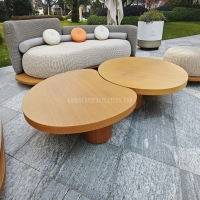Welcome to the website for landscape facilities products and knowledge.
What is the table’s performance in areas prone to earthquakes or seismic activity?
In regions frequently experiencing earthquakes or seismic activity, the performance of tables becomes critically important for both safety and functionality. Modern engineering has developed specialized approaches to ensure tables can withstand seismic forces while maintaining their structural integrity.
The fundamental challenge for tables in earthquake-prone areas lies in their center of gravity and base stability. Tables with wider bases and lower profiles generally demonstrate better performance during seismic events. Many manufacturers now incorporate seismic-resistant features such as reinforced legs, cross-bracing systems, and flexible joints that allow for slight movement without collapsing.
Material selection plays a crucial role in seismic performance. Tables constructed from materials with some flexibility, like certain metals and engineered woods, tend to perform better than those made from brittle materials. The connection points between table legs and surfaces are particularly important, with many manufacturers using specially designed brackets and fasteners that can absorb and dissipate seismic energy.
Laboratory testing using shake tables simulates various earthquake intensities to evaluate table performance. These tests have led to innovations in design, including tables with built-in damping systems and automatic locking mechanisms that engage during detected motion. For areas with high seismic risk, some tables feature retractable ground anchors or stabilizing feet that deploy when needed.
The weight distribution of items placed on tables also affects their seismic performance. Heavier objects should be positioned closer to the table's center and lower shelves to maintain stability. Some specialized tables include built-in retention systems or non-slip surfaces to prevent items from sliding during tremors.
Commercial and educational facilities in seismic zones often prioritize tables with certified seismic ratings. These tables undergo rigorous testing to meet specific safety standards, ensuring they can protect both people and valuable equipment during earthquakes. The development of smart tables with embedded sensors that can detect seismic activity and automatically adjust their stability features represents the latest advancement in this field.
Ultimately, a table's performance in earthquake-prone areas depends on multiple factors: its structural design, material composition, manufacturing quality, and proper installation. While no table can guarantee complete protection during extreme seismic events, modern engineering continues to improve the seismic resilience of furniture, making spaces safer in vulnerable regions.
Related search:

Recommendation
Elliptical metal outdoor table with nested design, resembling wood grain, round table